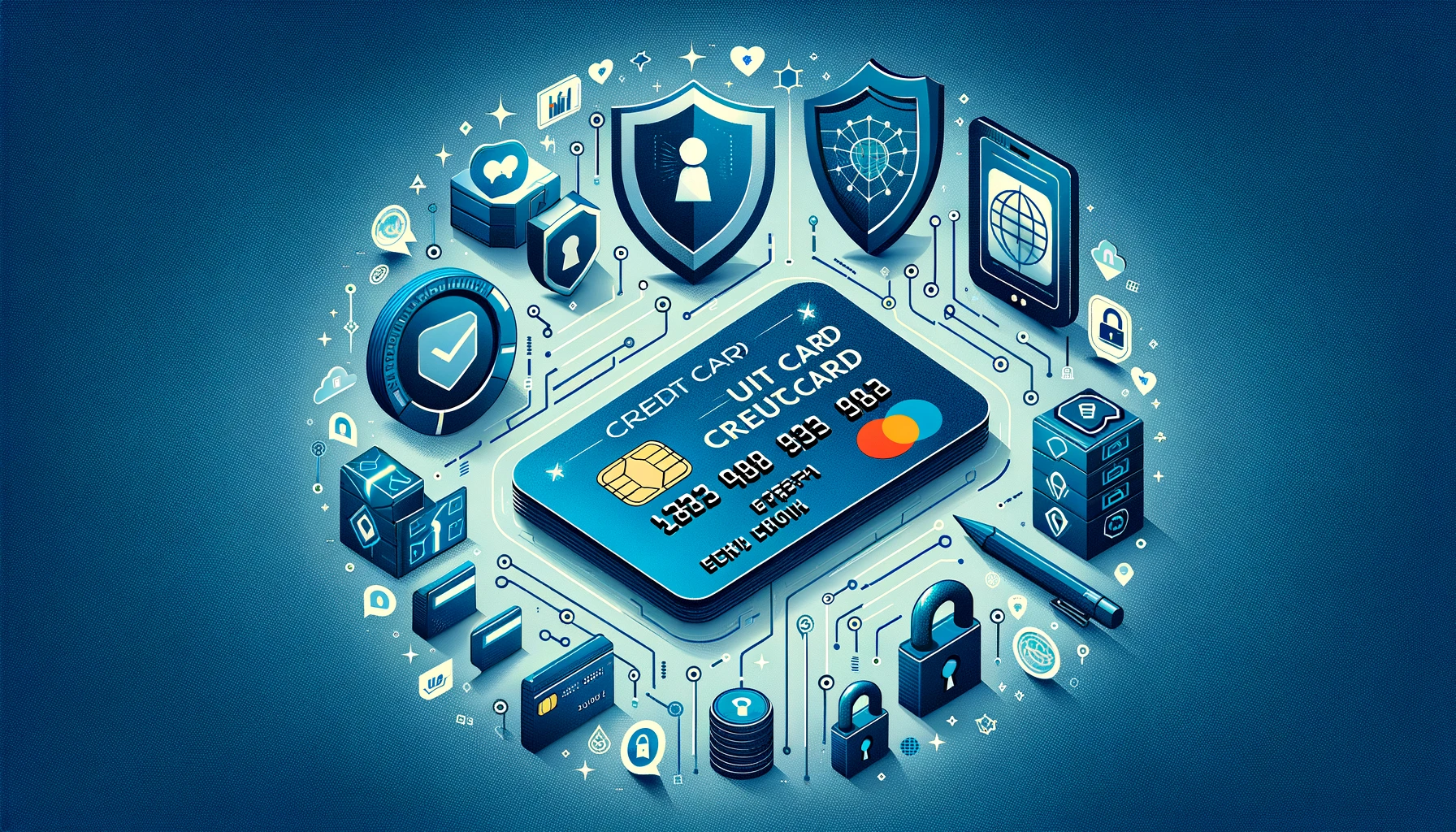Managing your finances effectively is crucial for the success of your business. In this article, we will explore the process of adding a credit card to QuickBooks, a popular accounting software. From setting up your QuickBooks account to managing credit card transactions and generating reports, we will guide you through the necessary steps to ensure accurate financial organization.
Key Takeaways
- Setting up a new QuickBooks account is the first step in adding a credit card to the platform.
- Accessing the Chart of Accounts is essential for adding and managing credit card accounts in QuickBooks.
- Recording credit card charges promptly helps in maintaining accurate financial records.
- Regularly reconciling credit card statements ensures that your financial data is up-to-date and accurate.
- Customizing credit card reports can provide valuable insights into your spending patterns and financial health.
Setting Up QuickBooks Account
Creating a New QuickBooks Account
To start organizing your finances with QuickBooks, the first step is to create a new account. Navigate to the QuickBooks website and select the ‘Sign Up’ option to begin the process. You’ll be prompted to choose the type of QuickBooks service that fits your business needs.
Here’s a quick rundown of the steps involved:
- Visit the QuickBooks official site.
- Click on ‘Sign Up’.
- Select your desired QuickBooks version.
- Fill in your business information.
- Confirm your email address.
- Set up your account password.
Ensure that the information you provide is accurate and up-to-date, as it will be crucial for managing your financial data effectively.
Once your account is created, you can add your financial institutions, including credit cards. For instance, if you have an American Express card with specific features such as rewards points or exclusive benefits, you’ll be able to manage and track these within QuickBooks.
Logging In to QuickBooks
Once you have created your QuickBooks account, the next step is to log in. Access the QuickBooks login page and enter your credentials. If you encounter any issues, QuickBooks provides a password recovery option to help you regain access. Ensure that your internet connection is stable during this process to avoid any disruptions.
After successfully logging in, you will be directed to the QuickBooks dashboard. This is your central hub for managing your financial data. Familiarize yourself with the layout and the various menu options available to you. QuickBooks offers a user-friendly interface, but taking a moment to understand the navigation will save you time in the long run.
It’s important to keep your login information secure and to log out after each session to protect your financial data.
Navigating to the Settings
Once you have logged into your QuickBooks account, the next step is to navigate to the settings where you can manage your financial tools and preferences. This is a crucial step to ensure that your account is customized to your business needs.
To find the settings:
- Look for the ‘Gear’ icon, which is typically located at the top right corner of the QuickBooks interface.
- Click on the ‘Gear’ icon to reveal a dropdown menu with various options.
- Select ‘Account and Settings’ (or ‘Company Settings’ in some versions) to access the main configuration area for your QuickBooks account.
It’s important to familiarize yourself with the settings area as it contains essential features for managing your accounts, including the addition of new credit cards and other financial instruments.
Adding a Credit Card
Accessing the Chart of Accounts
To add a credit card to QuickBooks, you must first access the Chart of Accounts. Navigate to the Accounting tab on the left-hand menu to find this section. Here, you’ll see a list of all the accounts currently set up in your QuickBooks file.
- Click on the ‘New’ button at the top right of the Chart of Accounts to begin adding a new account.
- Choose ‘Credit Card’ as the account type from the dropdown menu.
- Proceed to ‘Detail Type’ and select the appropriate credit card option.
It’s essential to accurately categorize your credit card to ensure proper financial tracking and reporting. The Chart of Accounts is a critical component of your financial organization, acting as the backbone for all your transactions.
Selecting the Credit Card Account
Once you’ve accessed the Chart of Accounts in QuickBooks, it’s time to select the credit card account you wish to manage. If you haven’t already added your credit card as an account, you’ll need to set it up by choosing the ‘New’ option and selecting ‘Credit Card’ as the account type.
When setting up a new credit card account, ensure that you’re in the correct section of your Chart of Accounts to avoid any confusion.
Follow these steps to select your credit card account:
- Scroll through the list of accounts until you find the ‘Credit Card’ section.
- Look for the specific credit card account you want to add transactions to.
- Click on the account to open its register.
Remember, proper account selection is crucial for accurate financial tracking and reporting.
Entering Credit Card Details
Once you’ve selected the credit card account type, you’ll need to enter the specific details of your credit card. Ensure all information is accurate to avoid issues with transaction recording and reconciliation.
- Account Name: Assign a unique name to identify the credit card in QuickBooks.
- Account Number: Enter the last four digits of the credit card number.
- Opening Balance: Input the balance as of the date you’re adding the card to QuickBooks.
- Billing Address: Provide the address associated with the credit card.
It’s crucial to keep your credit card information up to date. Regularly verify that the details in QuickBooks match your current credit card statements and account information.
Managing Credit Card Transactions
Recording Credit Card Charges
To maintain an accurate financial record in QuickBooks, recording each credit card charge is essential. This process ensures that your expenses are tracked and categorized correctly for reporting and tax purposes.
- Navigate to the ‘Expenses’ tab in QuickBooks.
- Choose ‘New Transaction’ and select ‘Credit Card Expense’.
- Fill in the vendor details, amount, and date of the transaction.
- Assign the expense to the appropriate category.
- Save the transaction to record the charge.
By consistently recording transactions, you can manage your spending more effectively and prevent unauthorized transactions. This practice also aids in handling potential loss or theft scenarios without impacting your credit score or recurring payments.
Reconciling Credit Card Statements
Reconciling your credit card statements in QuickBooks is crucial for maintaining accurate financial records. Ensure all transactions are recorded and match your credit card statement with the QuickBooks records. This process helps in identifying any discrepancies between your bookkeeping and the actual credit card charges.
To start reconciling, follow these steps:
- Go to the ‘Reconcile’ menu under ‘Banking’.
- Select the credit card account you want to reconcile.
- Enter the statement date and ending balance as per your credit card statement.
- Match and tick off each transaction in QuickBooks against your statement.
- Investigate and resolve any differences.
Reconciliation should be done regularly, preferably monthly, to keep your financials up-to-date and to catch any errors or fraudulent activities early on. It’s also a good practice to review your credit card statements for any unauthorized charges or billing errors.
Online communities provide valuable insights on credit card management, repair, and rebuilding. Resources include tips, advice, and success stories for improving credit scores and navigating financial challenges.
Categorizing Credit Card Expenses
Categorizing credit card expenses in QuickBooks is a critical step to maintain clear financial records and ensure accurate reporting. Organize expenses into relevant categories to simplify tax preparation and gain insights into spending patterns.
- Review each transaction carefully.
- Assign it to an appropriate expense category.
- Split transactions between categories if necessary.
By consistently categorizing credit card expenses, you can streamline the reconciliation process and make informed financial decisions.
Remember, managing credit card receipts is essential for financial organization. Keep receipts until the return period ends, reconcile with statements, and discard when no longer needed.
Generating Reports
Viewing Credit Card Activity Report
To effectively manage your finances, it’s crucial to regularly review your credit card activity. QuickBooks makes this easy by providing a comprehensive report that details all transactions made with your credit card. This report can be accessed by navigating to the ‘Reports’ menu and selecting ‘Credit Card Activity’.
The Credit Card Activity Report includes information such as the date of each transaction, the merchant, the amount spent, and the current balance of the credit card. It’s a valuable tool for tracking spending patterns and ensuring that all charges are accurate and accounted for.
By consistently monitoring your credit card activity, you can quickly identify any discrepancies or fraudulent charges, allowing for timely resolution.
For a more detailed analysis, you may want to compare your credit card’s performance against others. For instance, a comparison of top cashback credit cards could highlight how your card stacks up in terms of features, benefits, and earning potential. Understanding these aspects is essential for maximizing your cashback and making informed financial decisions.
Analyzing Credit Card Spending
Once you’ve gathered your credit card spending data in QuickBooks, it’s crucial to analyze it to understand your financial habits better. Reviewing your expenses can help identify areas where you can cut costs or optimize spending. QuickBooks provides tools for analyzing your spending patterns over time.
- Categorize your expenses to see where your money is going.
- Compare your spending across different periods to spot trends.
- Use QuickBooks’ built-in analytics to forecast future spending and budget accordingly.
By regularly analyzing your credit card spending, you can make informed decisions that could lead to significant financial savings.
Remember, the goal of analyzing your spending is not just to track where your money has gone, but to empower you to make proactive financial decisions. Utilize the insights gained to adjust your budget and spending habits for a healthier financial future.
Customizing Credit Card Reports
QuickBooks allows for extensive customization of credit card reports to fit the specific needs of your business. You can tailor reports to highlight the information that’s most important to you, whether it’s spending patterns, payment histories, or expense categories.
- Adjust the date range to focus on specific billing cycles.
- Filter transactions by vendor, amount, or even by the type of expense.
- Choose which columns to display, such as date, description, amount, and more.
By customizing your credit card reports, you can gain better insights into your financial data, helping you make more informed decisions about your business spending.
Remember to review the privacy policy and other additional content provided by your credit card to ensure you’re making the most of features like 0% intro APR, cell phone protection, and rewards redemption options. Regularly check for updates, such as monthly FICO Score reports, to stay informed about your credit standing.
Conclusion
In conclusion, adding a credit card to QuickBooks is a simple and essential step for effective financial organization. By following the steps outlined in this article, you can streamline your accounting processes, track expenses more efficiently, and ensure accurate financial reporting. Incorporating a credit card into your QuickBooks system will help you stay organized, save time, and make informed financial decisions for your business. Take advantage of this powerful tool to enhance your financial management and improve the overall efficiency of your business operations.
Frequently Asked Questions
How do I know if my credit card is supported by QuickBooks?
QuickBooks supports a wide range of credit cards. You can check the list of supported cards on the QuickBooks website or contact their customer support for assistance.
Can I add multiple credit cards to my QuickBooks account?
Yes, you can add multiple credit cards to your QuickBooks account. Simply follow the same process for each additional card you want to add.
Is it safe to enter my credit card details in QuickBooks?
QuickBooks uses industry-standard security measures to protect your data. It is safe to enter your credit card details in QuickBooks as long as you keep your account secure.
How often should I reconcile my credit card statements in QuickBooks?
It is recommended to reconcile your credit card statements in QuickBooks on a monthly basis to ensure accuracy and identify any discrepancies.
Can I categorize my credit card expenses in QuickBooks for better tracking?
Yes, you can categorize your credit card expenses in QuickBooks to track your spending more effectively. Simply assign appropriate categories to each transaction.
Are there any fees associated with adding a credit card to QuickBooks?
There are no additional fees for adding a credit card to QuickBooks. However, standard transaction fees may apply based on your credit card provider’s terms.



